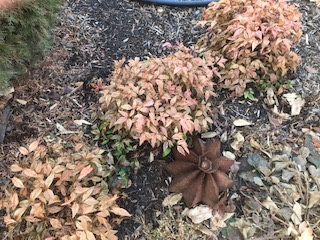Winter kill in the garden
Is it dead or is it dormant?
Cold temperatures this winter were hard on humans and plants. Even seasoned gardeners wonder what’s gone for good. The best advice overall is to wait, wait, and wait some more.
We normally have a few weeks left until the danger of frost has passed. According to a hardiness zone chart for the Hutchinson area, our average last frost occurs during the first few weeks of April. But it hasn’t been an average winter. Coming on the heels of dry weather last fall, have the cold temperatures damaged our gardens?
The most important thing now is to wait. If you prune a dormant plant right now and warm weather stimulates growth, the new leaves will be highly susceptible if we have another freeze, and it will then die. If you wait until the danger of frost has passed, you will give your dormant plants a fighting chance. Plants that survive might need much longer to recover this year.
A quick stroll through my garden reveals some plants with more winter damage than other more hardy ones.
This heavenly bamboo was just transplanted to a new spot last year. It did great over the summer but time will tell how well it recovers from the cold.
These Firepower nandinas were cut back to the ground last spring and given a chance to refresh with new growth. There is a little bit of green left at the base but it’s too early to show any new leaves.
This juniper is showing definite signs of winter kill. I’ll probably wait another month and then snip off the dead parts and it should put on some new growth.
Salvias range from cold hardy to tender. If you don’t know your variety, the best approach is to cut them back to green wood. Do the same to shrubs and other woody perennials that appear dead. If you don’t see any green, simply cut them back to the ground and be very patient.
This sago palm usually spends the winter in the garage with no problems. Not this year. However, the center bud is firm so it might survive.
There is good news from the garden, though. Green! Daffodils are emerging and this sedum will never die.
For the vegetable gardener, the following advice comes from the K-State Horticulture Newsletter from February 23, 2021.
One of the most neglected tools for vegetable gardeners is a soil thermometer. Soil temperature is a much better measure of when to plant than air temperature of the calendar. Planting when soil is too cool can cause some seeds to rot and transplants to just sit there.
Thanks to:
Diana C. Kirby, the American Statesman
Ward Upham, K-State Horticulture Newsletter









Comments
Post a Comment